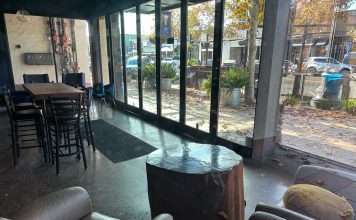In 2015, homelessness will not exist in Santa Clara County. At
least that’s the plan for a task force of county and city
officials, service providers and homeless advocates.
In 2015, homelessness will not exist in Santa Clara County. At least that’s the plan for a task force of county and city officials, service providers and homeless advocates. Two recent events signaled some major steps forward toward that ambitious goal: first, the groundbreaking of the Sobrato Transitional Apartments for homeless families and the year-round Transitional Center; second, the federal Housing and Urban Development Agency announced its Homeless Assistance Awards to Santa Clara County, which includes a “Housing First” project, a new approach to dealing with chronically homeless individuals. The Ending Homelessness in 10 Years Task Force began meeting to draft the plan that will incorporate these two projects.
The Sobrato Transitional Apartments and Center are the realization of a dream of the Gilroy Homeless Task Force that started in earnest in 1997 to replace the seasonal program at the armory and increase services to both individuals and families in South County.
Housing First is a new approach to serving chronically homeless individuals, who make up 10 percent of the homeless population, and because of their disabilities and other problems, consume 50 percent of the services, while never gaining a foothold on stability. This approach has been employed in other communities across the nation with great success. Studies show that when these individuals are given permanent housing first, then are provided with supportive services, they are as successful, if not more so, than those who follow the traditional route of emergency shelter, to transitional housing, then to permanent housing, which works well for most people who have a brief episode of homelessness.
This new approach offers hope for chronically homeless individuals, who, contrary to public opinion, would rather not be on the street and would like to end their tenure as social outcasts. It also offers new hope to taxpayers. Providing a subsidized apartment and supportive services costs taxpayers much less than supporting an individual on the street who consumes emergency services.
This project is sponsored by EHC LifeBuilders, which will use federal subsidies to help pay the rent, and has a number of partners to provide support services. The project administrators, with a lot of experience working with homeless people in South County, and, in partnership with South County Housing, have promised to use some of the subsidies here for chronically homeless Gilroy residents, some of whom have been on the streets for as many as 18 years and are well known to service providers.
We have quite a way to go to solve the conditions that make someone homeless in the first place, but, after two decades of frustration over dealing with homelessness, we are finally obtaining all the pieces of the puzzle to put long-term remedies in place so that homelessness is no longer a permanent condition.









